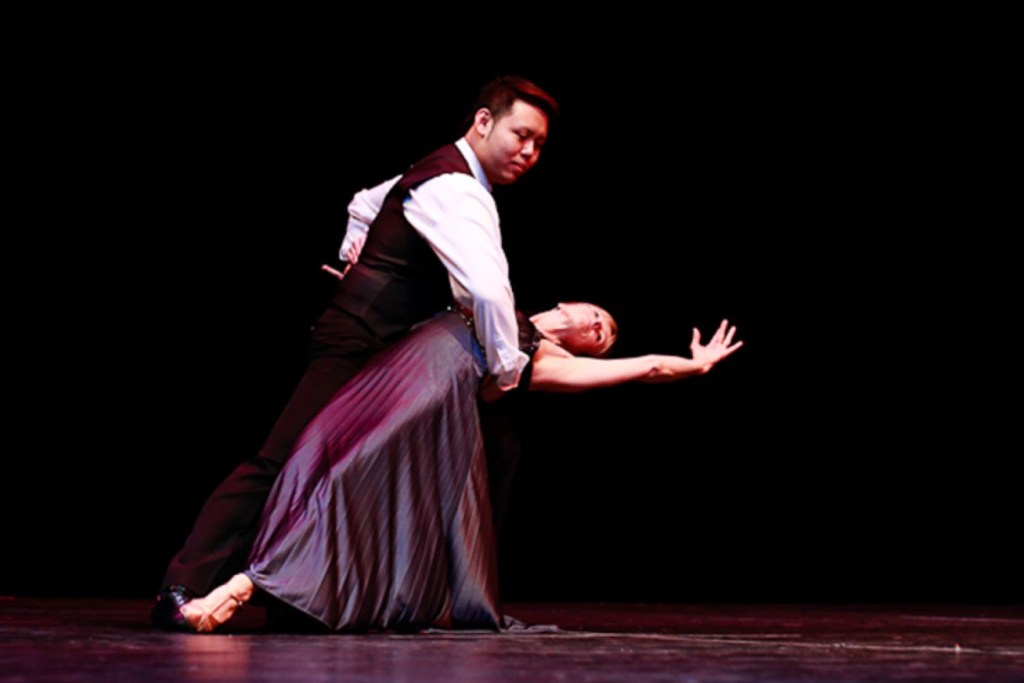Waltz
The waltz, with its origins dating back to 16th-century Europe, has evolved into a graceful and enduring ballroom dance. Initially criticized for its close-hold stance and rotating movements, the waltz eventually gained acceptance and became a staple in ballroom competitions. The dance’s mood is characterized by an elegant and romantic atmosphere, accentuated by the sweeping movements across the dance floor and the three-four time signature of its music. Dancers move gracefully in a rotating motion, creating a sense of flowing continuity. The basic technique involves a smooth and continuous rise and fall, with partners maintaining a close connection. The waltz has stood the test of time, captivating audiences with its timeless beauty, and remains a cornerstone in ballroom dance, symbolizing the epitome of grace and poise.

Originated from: 16th-century Europe
Mood: elegant and romantic
Themes: never ending love
Basic technique: smooth and continuous rise and fall, with partners maintaining a close connection